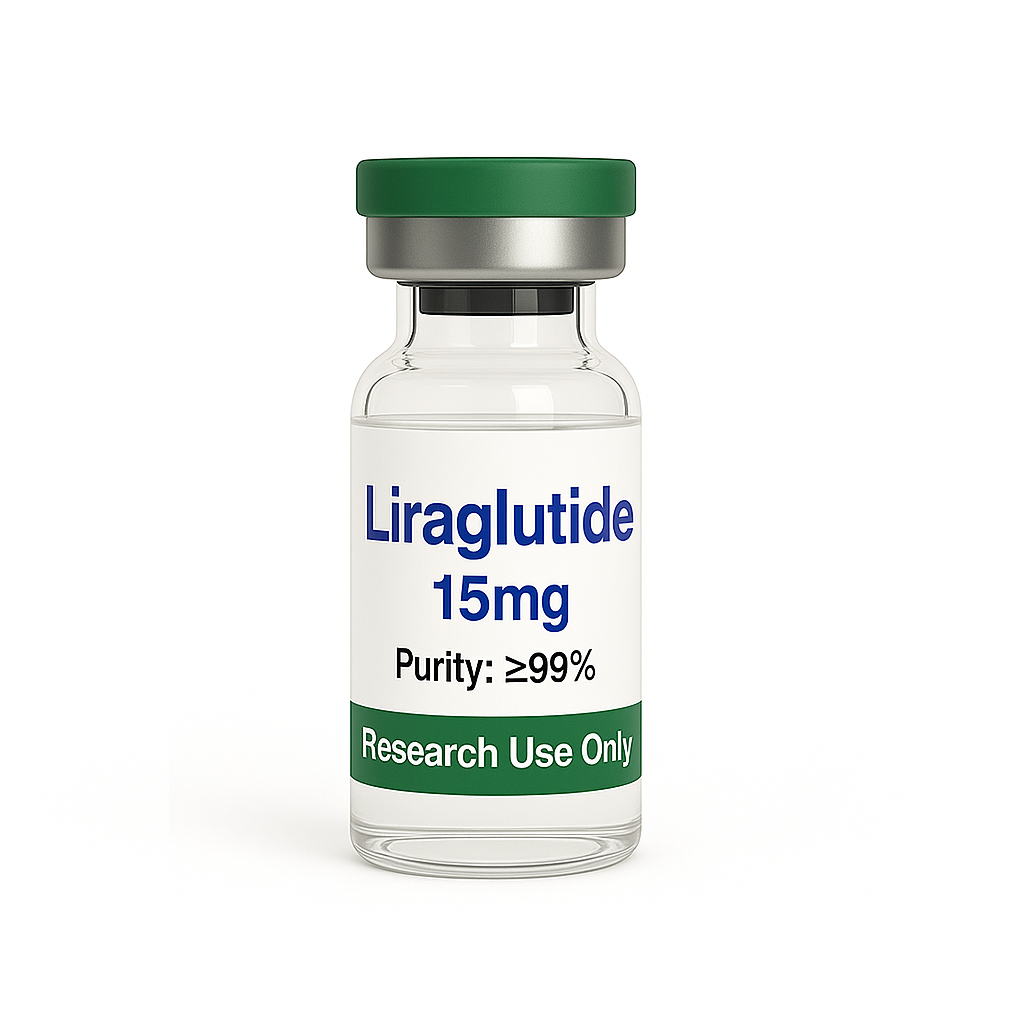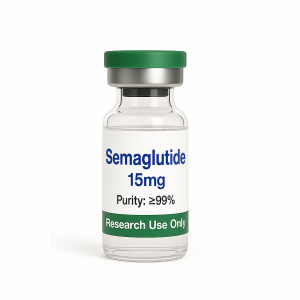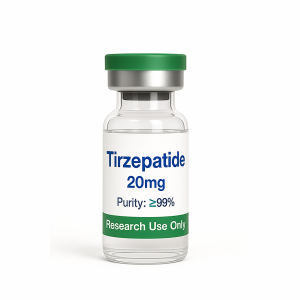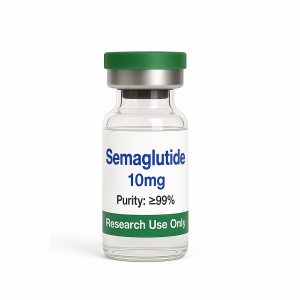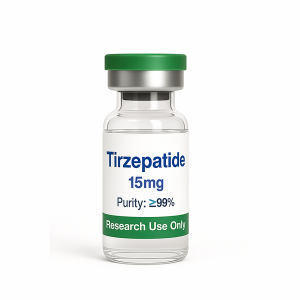15mg High Purity Peptides Powder Liraglutide
Product Detail
一、Core Mechanisms of Action
1. Blood Glucose Regulation
-
Promotes insulin secretion: Activates GLP-1 receptors on pancreatic β-cells, enhancing insulin release when blood glucose is elevated. Its effect diminishes when glucose levels are normal, thereby reducing the risk of hypoglycemia.
-
Suppresses glucagon secretion: Reduces hepatic gluconeogenesis, leading to lower fasting blood glucose levels.
-
Delays gastric emptying: Slows the rate at which food enters the small intestine, thereby reducing postprandial blood glucose spikes.
2. Weight Control
-
Central appetite suppression: Acts on the hypothalamic satiety center, enhancing satiety signals (e.g., activation of POMC neurons) and reducing hunger.
-
Reduced food intake: Gastric emptying delay and modulation of gastrointestinal signals further decrease appetite.
3. Cardiovascular and Metabolic Protection
-
Improves lipid profile: Lowers triglyceride levels and increases high-density lipoprotein (HDL) cholesterol.
-
Anti-atherosclerosis: Animal studies show it can suppress vascular plaque inflammation, though it has limited effect on established plaques.
-
Cardiorenal protection: Large clinical trials have confirmed its ability to reduce cardiovascular events in patients with diabetes and slow the progression of renal impairment.


